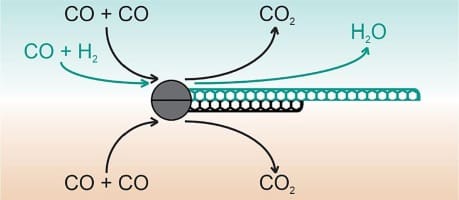After doping, this led to a significantly lower ratio of equivalent sheet resistance (R90) to yield.
Scientists at Skoltech University, Russia, have made a breakthrough in manufacturing single-walled carbon nanotube (SWCNT) films. By introducing hydrogen gas alongside carbon monoxide in the chemical vapor deposition (CVD) process, they achieved a nearly fifteen times increase in carbon nanotube yield without compromising the quality, addressing a major limitation in this manufacturing technology.
Aerosol chemical vapor deposition method using CO disproportionation (the Boudouard reaction) is used for synthesizing single-walled carbon nanotubes (SWCNTs), particularly in thin film form. Although this method boasts several benefits such as high-quality nanotubes and controllable processes, it has been limited by low production yield.
To address this, the study investigated the role of hydrogen, added to the CO atmosphere, as a growth promoter in the synthesis and properties of SWCNTs. The research employed various analytical techniques, including optical spectroscopy, conductivity tests, transmission electron microscopy (TEM), scanning electron microscopy (SEM), and thermodynamic calculations. These methods helped to understand how hydrogen impacts catalyst activation and nanotube growth.

The study revealed two distinct temperature regimes where hydrogen had a beneficial effect. At a lower temperature of 880 °C, the presence of hydrogen increased the yield by approximately 15 times. After doping, this led to a significantly lower ratio of equivalent sheet resistance (R90) to yield. At a higher temperature of 1000 °C, hydrogen facilitated an extension of SWCNTs by 2.4 times, resulting in a threefold reduction in R90, coupled with a notable increase in yield.
These findings offer both a deeper understanding of the nanotube growth mechanism and practical insights for optimizing the production rate of SWCNT films. The study suggests that manipulating hydrogen levels in the synthesis process can significantly enhance the efficiency and quality of SWCNT production.








